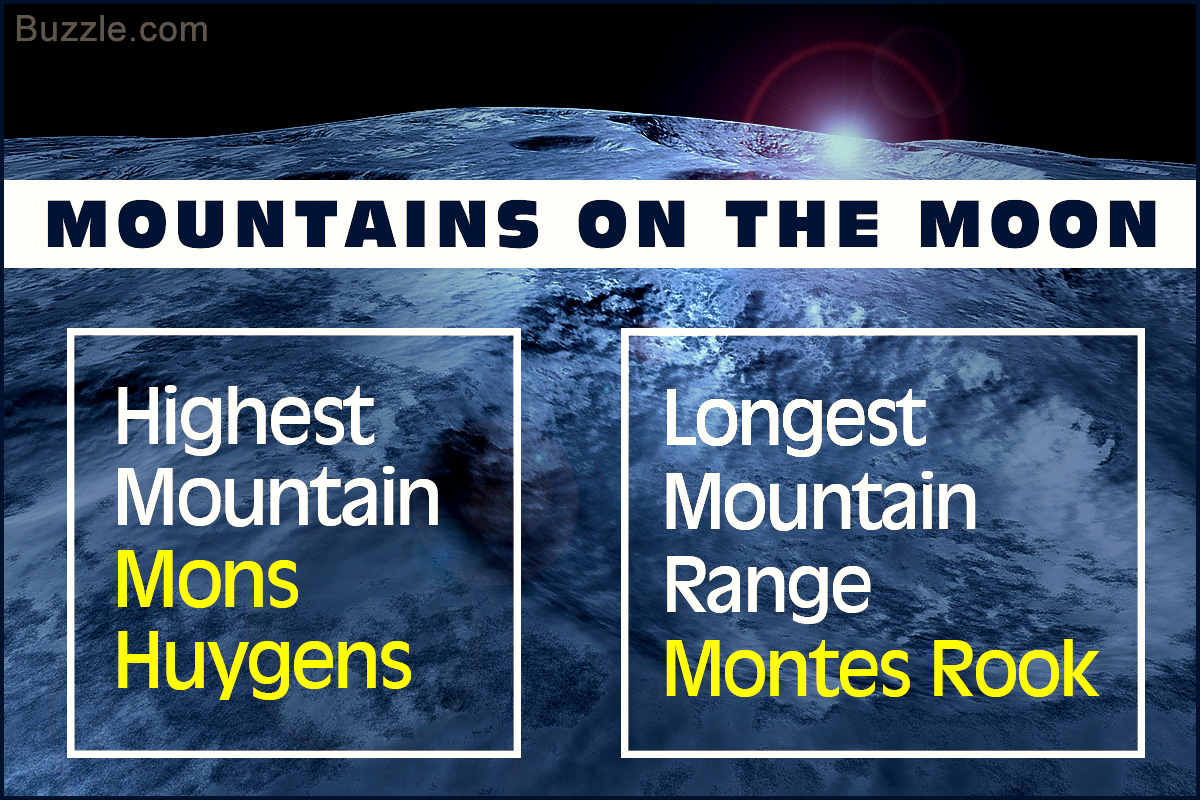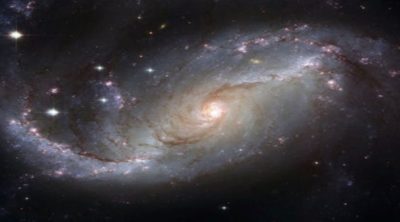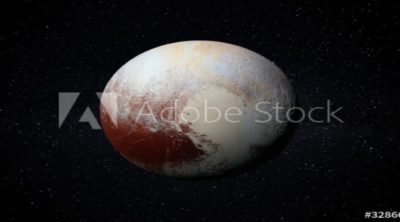
Were you aware that there are mountains on the moon? The fact is there are, and here we shall learn all about them.
Did You Know?
The tallest mountain on the Moon is Mons Huygens, which stands at a height of 5.5 km!
The Moon is a satellite of the Earth, and it’s only one. It revolves around the Earth while rotating on its orbit at the same time. Ever since the erstwhile Soviet Union’s Luna 2 spacecraft landed on the Moon, there have been attempts to study the landscape of the Moon, its craters, and mountains. The biggest milestone was man’s landing on the Moon in 1969. Neil Armstrong described it as, “A single step for man, a giant leap for mankind.” Our quest was driven by the question, “Will a time come when it will be possible for us to have our homes on the Moon?” Now that we have quite a lot of information about the Moon, we know that there are mountain ranges on its surface, with peaks that reach a height of 5 meters or more. Curious to know which are they? Here we go…
List of Mountains on the Moon
There are close to thirty mountains on the Moon, and here we shall have a closer look at some of the highest ones.
Mons Huygens
Height: 5.5 km
Diameter: 40km
Mountain Range: Montes Apenninus
Coordinates: 20.0° N, 2.9° W
Named After: Christiaan Huygens, astronomer
Mons Hadley
Height: 4.5 km
Diameter: 25 km
Mountain Range: Montes Apenninus
Coordinates: 26.5° N, 4.7° E
Named After: John Hadley, inventor
Mons Bradley
Height: 4.3 km
Diameter: 30 km
Mountain Range: Montes Apenninus
Coordinates: 22.0° N, 1.0° E
Named After: James Bradley, English astronomer
Mons Penck
Height: 4.0 km
Diameter: 30 km
Coordinates: 10.0° S, 21.6° E
Named After: Albrecht Penck, German geologist
It’s a solitary mountain.
Mons Hadley Delta
Height: 3.9 km
Diameter: 25 km
Mountain Range: Montes Apenninus
Coordinates: 26.5° N, 4.7° E
Named After: John Hadley
Mons Blanc
Height: 3.8 km
Diameter: 25 km
Mountain Range: Montes Alpes
Coordinates: 45.0°N 1.0°E
Named After: Mont Blanc, an Alpine peak
Mons Wolff
Height: 3.8 km
Diameter: 35 km
Mountain Range: Montes Apenninus
Coordinates: 17.0° N, 6.8° W
Named After: Baron Christian von Wolff
Mons Ampere
Height: 3.3 km
Diameter: 30 km
Mountain Range: Montes Apenninus
Coordinates: 19.0° N, 4.0° W
Named After: André-Marie Ampère, physicist
Mons Pico
Height: 2.4 km
Diameter: 25 km
Coordinates: 45.7° N, 8.9° W
Named After: The iish word for ‘peak’
It is a solitary mountain.
Mons Piton
Height: 2.1 km
Diameter: 25 km
Coordinates: 40.6° N, 1.1° W
Named After: A peak on Tenerife Island
It’s an isolated mountain range.
Mons Vitruvius
Height: 2.3 km
Diameter: 15 km
Mountain Range Montes Taurus
Coordinates: 19.4° N, 30.8° E
Named After: The crater Vitruvius, named after Marcus P. Vitruvius
Mons La Hire
Height: 1.5 km
Diameter: 25 km
Coordinates: 27.8° N, 25.5° W
Named After: Philippe de la Hire
It’s a solitary mountain.
Mons Vinogradov
Height: 1.3 km
Diameter: 25 km
Coordinates: 22.4 N, 32.4 W
Named After: Alexander P. Vinogradov, chemist
It’s a solitary mountain.
Mons Maraldi
Height: 1.3 km
Diameter: 15 km
Coordinates: 20.3° N, 35.3°
Named After: The crater Maraldi, named after Giovanni D. Maraldi
It’s a solitary mountain.
Mons Rümker
Height: 1.1 km
Diameter: 70 km
Coordinates: 40.8° N, 58.1° W
Named After: Carl Ludwig Christian Rümker, astronomer
It’s an isolated lunar dome mountain.
Mons Gruithuisen Gamma
Height: 0.9 km
Diameter: 20 km
Coordinates: 36.6° N, 40.5° W.
Named After: The crater Gruithuisen located nearby
It’s an isolated lunar dome mountain.
In addition to these, there are other smaller mountains on the surface of the Moon, and their names are given below.
| Mountain | Diameter | Latitude |
| Mons Agnes | 1 km | 18.6°N 5.3°E |
| Mons André | 10 km | 5.2°N 120.6°E |
| Mons Ardeshir | 8 km | 5.0°N 121.0°E |
| Mons Argaeus | 50 km | 19.0°N 29.0°E |
| Mons Delisle | 30 km | 29.5°N 35.8°W |
| Mons Dieter | 20 km | 5.0°N 120.2°E |
| Mons Dilip | 2 km | 5.6°N 120.8°E |
| Mons Esam | 8 km | 14.6°N 35.7°E |
| Mons Ganau | 14 km | 4.8°N 120.6°E |
| Mons Gruithuisen Delta | 20 km | 36.0°N 35.9°W |
| Mons Hansteen | 30 km | 12.1°S 50.0°W |
| Mons Herodotus | 5 km | 27.5°N 53.0°W |
| Mons Moro | 10 km | 12.0°S 19.7°W |
| Mons Usov | 15 km | 12.0°N 63.0°E |
Mountain Ranges on the Moon
There are mountain ranges on the Moon, some of which contain famous peaks that we have discussed above. The names of these mountain ranges, along with their selenographic coordinates are specified below.
| Mountain Range | Dia. | Latitude |
| Montes Agricola | 141 km | 29.1°N 54.2°W |
| Montes Alpes | 281 km | 46.4°N 0.8°W |
| Montes Apenninus | 401 km | 18.9°N 3.7°W |
| Montes Archimedes | 163 km | 25.3°N 4.6°W |
| Montes Carpatus | 361 km | 14.5°N 24.4°W |
| Montes Caucasus | 465 km | 38.4°N 10.0°E |
| Montes Cordillera | 574 km | 17.5°S 81.6°W |
| Montes Haemus | 560 km | 19.9°N 9.2°E |
| Montes Harbinger | 90 km | 27.0°N 41.0°W |
| Montes Jura | 422 km | 47.1°N 34.0°W |
| Montes Pyrenaeus | 164 km | 15.6°S 41.2°E |
| Montes Recti | 90 km | 48.0°N 20.0°W |
| Montes Riphaeus | 189 km | 7.7°S 28.1°W |
| Montes Rook | 791 km | 20.6°S 82.5°W |
| Montes Secchi | 50 km | 3.0°N 43.0°E |
| Montes Spitzbergen | 60 km | 35.0°N 5.0°W |
| Montes Taurus | 172 km | 28.4°N 41.1°E |
| Montes Teneriffe | 182 km | 47.1°N 11.8°W |
* Dia. stands for Diameter


